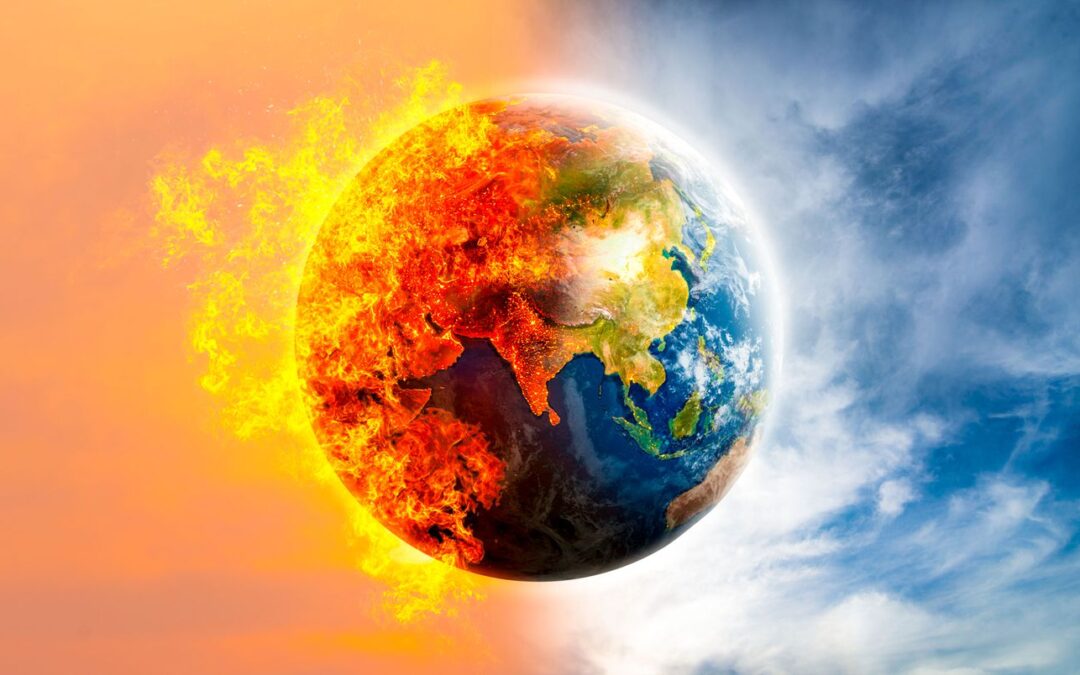Variations in the sun’s energy output have an impact on changes in Earth’s climate, Therefore, the sun has a significant role to play in the long-term and short-term “climate change.”
“Climate Change” is a natural cycle that the Earth experiences. There are certain times in these cycles that cause heat waves and drought and there are also times within these cycles that cause hurricanes, excessive precipitation, hail, snow storms, and even volcanoes to erupt.
To understand this better look up “the grand solar minimum.” I have read many articles on this subject (Thank you Richard) and they were amazing and full of really informative history of the Earth’s climate cycles.
Orbital change is another natural occurrence that has caused major changes in the Earth’s climate. The Earth’s orbital tilt is said to vary between 22 and 25 degrees roughly every 41,000 years. Major scientific studies show Orbital Change is what transformed the Sahara from a fertile grassland to a desert. This shift in how the Earth circled the sun affected the amount of sunlight that the region of Africa received.
The severity of the current climate change “crisis” has been blamed almost exclusively on man-made carbon-dioxide emissions and that the change is permanent. A recent study conducted by several universities as well as NASA point to an “inconvenient truth” – that neither of these statements is true.
Antarctica’s climate was once warm enough to sustain substantial vegetation including trees. How warm? Some estimates place it at 20 degrees warmer than the present day. Temperatures have been estimated to reach as high as 45 degrees Fahrenheit and precipitation was several times higher than what the region currently experiences. This presents a problem for some of the current statements regarding climate change as humans weren’t around during this period. Also given that the region was once so warm and then returned to far chillier temperatures points to another potential problem – climate change appears to be a naturally recurring process and one that is CYCLICAL IN NATURE,
As with today’s warming trends, the chief suspect during this time was carbon dioxide. The current rate of increase for carbon dioxide levels in the atmosphere will reach Miocene levels around the end of the century. The findings of this study are supported by other documented evidence that points to higher levels of carbon dioxide during the middle Miocene Epoch. Scientists do not know why the greenhouse gas was at such high levels during this period. So to interpret, the greenhouse gases were as bad (for a period of time)16 million years ago, as they are today. You know – before the human race.
To add another point there are no more hurricanes today than there were 100 years ago, and this comes from the National Oceanic and Atmospheric Administration. As a matter of fact, the deadliest natural disaster in American history remains the 1900 hurricane in the island city of Galveston, Tx. On September 8th, a category four hurricane descended on the town, destroying more than 3,600 buildings with winds surpassing 135 MPH. According to the National Oceanic and Atmospheric Association, the death toll ranged from 6,000 to 12,000.
1888 the great white hurricane on the east coast took more than 400 lives, On March 11th and 12th the blizzard dropped up to 4.2 feet of snow on Connecticut, New Jersey, Massachusetts, and New York. Snowdrifts buried housed and trains while fierce winds caused around 200 ships to flounder.
1922 Knickerbocker storm, east Coast, A deadly blizzard engulfed the East Coast on January 27th and
28th. Washington DC recorded 2.3 feet of snow with staggering snow drifts. It was named the Knickerbocker Storm after the collapse of the roof of the Knickerbocker Theater due to the accumulation of heavy snow. It killed 98 people and injured around 133 more.
1925 Great Cyclone Disaster, Midwest and South. Parts of the Midwest and South were struck by a huge and destructive outbreak of tornadoes in March 1925, including the deadliest tornado in U.S. History. The great tri-state tornado on March 18th left a trail of destruction in its path from southeastern Missouri through Southern Illinois and Southwest Indiana. It killed 695 people and destroyed 15,000 homes.
1926 Great Miami Hurricane, Florida, A 10-foot storm surge walloped Miami Beach in the aftermath of the large and intense tropical cyclone that devastated the greater Miami area in September 1926. A total of 372 were killed and 43,000 were left homeless, which was nearly a third of the country’s population at the time.
1928 Okeechobee Hurricane, Florida, In September 1928 this monstrous hurricane ravaged the gulf coast as well as Puerto Rico. At least 2,500 people drowned. It is considered the second deadliest hurricane in U.S. history.
1936 Tupelo-Gainsville Tornado Out Break, Mississippi and Georgia, One of the deadliest in U.S. history, The Tupelo tornado in April 1936 ripped through the town in Mississippi claiming 216 lives and injuring over 700. The morning after, the storm system moved into Georgia, causing other tornados to develop including double twisters that hit Gainsville in Georgia, Killing another 203 people and flattening parts of the industrial town.
1938 The Great New England Hurricane, Parts of New England were destroyed by winds of up to 183 MPH and deadly waves when a hurricane struck Long Island on October 3rd, 1938. 8,900 homes were swept to sea with the water surge reaching up to 25 feet.
In conclusion, You can see that NO, the storms are not increasing or intensifying in recent history. Due to the massive influx of people especially in the coastal regions that build massive amounts of buildings and other structures, the devastation seems more intense but it is not. Compare the loss of lives when these areas were much more sparsely populated than today. Compare the destruction of buildings and houses when there were so many fewer back then.
What about how greenhouse gases were at the same levels as today way back 16 million years ago before humans even existed? What about how the Sahara used to be a grassland? What about how Antarctica used to have trees and shrubs?
“No Virginia,” there is no climate change! (as in “Yes Virginia, There is a Santa Clause” for some of you younger folks.) At least not YOUR Definition of Climate Change. They have twisted the meaning of climate change to be defined as the permanent destruction of Earth by Mankind and Farting Cows! The politicians try to push this lie so they can line their pockets with this Earth and America destroying the “Green New Deal.”
I hope after reading this you can you can now see how climate change is actually how the Earth is always in different cycles because of forces of nature and always has been and always will be.
Sources of reference:
NASA
U.S. National Science Foundation
Louisiana State University
NASA’s Jet Propulsion Laboratory
NASA.gov
Jason Rhian
Rachel Truman, Love Exploring The National Oceanic and Atmospheric
Administration









